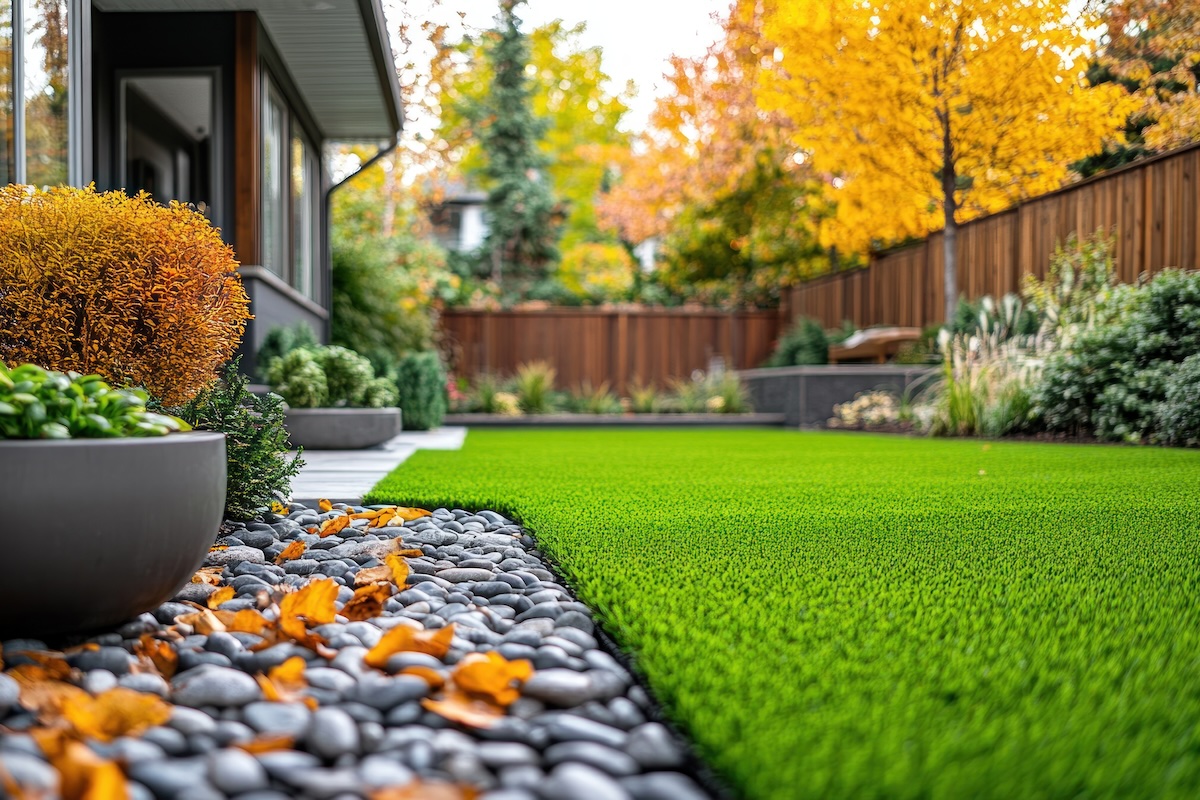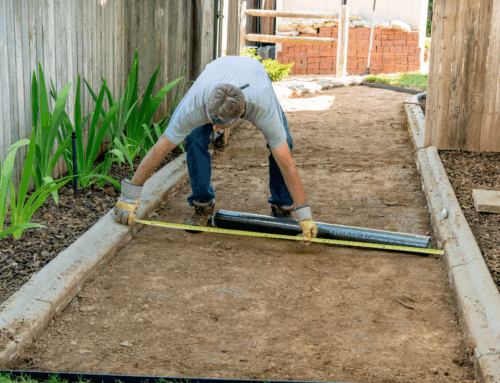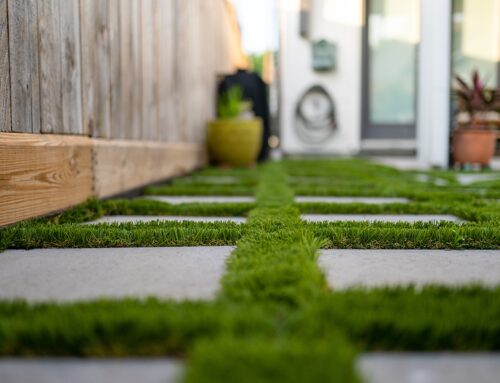Last Updated on October 25, 2025 by ReTurf
Artificial turf installation is a flexible project that can be scheduled during any month of the year, but the best timing depends on local climate, ground conditions, and installer availability. While synthetic turf isn’t alive like natural grass, the environment it’s installed in still affects how efficiently and cleanly the job can be completed. Understanding how each month presents its own set of advantages helps homeowners, schools, and athletic facilities plan intelligently and get the best return on their investment.
The Year-Round Feasibility of Turf Installation
Artificial turf systems are not bound by growing seasons. Installation depends on dry, stable ground, workable temperatures, and sufficient daylight for the crew to complete compaction, seaming, and infill placement. That means the calendar is wide open, but certain times of year naturally lend themselves to smoother, faster, and sometimes cheaper projects.
January: Off-Season Efficiency
January is often overlooked, yet it can be an excellent time for installation, especially in mild climates. Contractors typically have more availability, and material suppliers are less backed up. Cooler air allows adhesives to cure consistently, and crews can take their time with grading and compaction.
However, colder regions face occasional frozen ground or frequent rain, which can slow down excavation.

February: Getting Ahead of the Rush
February bridges winter and spring. Ground temperatures rise, and extended daylight begins to return. Scheduling in February means you can complete a project before the surge of spring clients begins. Prices are sometimes lower, and installers appreciate the steadier workflow.
Moisture may still linger in the soil, so proper drainage and subgrade preparation remain essential. But once the base is compacted and stable, February offers an ideal early-season window for turf installation without the rush of late spring.
March: Prime Conditions Arrive
March typically marks the unofficial start of turf season. The ground is soft enough to work, rain is manageable, and outdoor workdays are comfortable. Adhesives cure predictably, compaction is straightforward, and the finished product settles cleanly.
For homeowners or sports facilities that want synthetic grass ready by summer, March is often the sweet spot. Materials are fresh, demand is rising but not yet overwhelming, and the weather cooperates.
April: Early Spring Advantage
April continues that favorable pattern. It’s a peak period for installations because both weather and scheduling align. Warmer temperatures allow crews to install base layers efficiently, while moderate humidity keeps dust low. Turf edges, seams, and infill distribute cleanly under consistent sunlight.
The main challenge is availability. Many homeowners realize by April that they want their yards or athletic areas ready for summer use. That increased demand can push schedules out several weeks. Booking early avoids the bottleneck while taking full advantage of the perfect weather window.
May: Warm Weather and High Demand
By May, the installation rush is in full swing. Temperatures are ideal for fast curing, but the surge of customers can make scheduling difficult. If your project isn’t booked in advance, you might face a waiting period.
June: Productive but Hot
June brings longer days, meaning more working hours per project. Installers can complete jobs quickly, but heat management becomes a concern. High surface temperatures make handling turf rolls uncomfortable, and humidity can complicate curing.
Despite these challenges, installation is still common in June. Skilled crews adapt their schedules, starting early, shading materials, and allowing for brief afternoon rain delays.
July: Managing Heat and Storms
July installations can be tricky. High heat softens turf backing and adhesives, while frequent afternoon storms interrupt progress. Work is best done in early morning hours when surfaces are cooler.
Still, July works for small projects or shaded areas where site conditions remain moderate. For customers who don’t mind minor scheduling adjustments, turf can still be installed cleanly with good planning. Extra care must be taken to protect base compaction from sudden downpours.
August: Late-Summer Tradeoffs
August mirrors July’s challenges, heat, humidity, and unpredictable rain. Installation is possible but slower. Crews often prepare the base one day and finish turf placement the next to avoid saturated conditions. For large commercial or school projects, August is often crunch time before fall sports, meaning installation teams operate at full capacity.
If you can handle potential rescheduling, August can still deliver solid results.
September: Cooling Down for Ideal Conditions
September is one of the best overall months for artificial turf installation. Temperatures ease, humidity drops, and the ground remains warm enough for proper compaction. Rain frequency declines after the peak of hurricane season in many regions.
Crews are still active, but the rush has passed. Turf installed now will settle in comfortably before winter, requiring minimal maintenance. Homeowners and facilities can enjoy it during cooler weather events or fall sports seasons without disruption.

October: Balanced Weather and Open Schedules
October offers nearly perfect conditions for installation in much of the country. Temperatures are moderate, the soil is dry, and installers’ schedules are often more flexible. It’s the preferred time for detailed projects that require precision, playgrounds, pet runs, or intricate landscaping designs.
The cooler air allows adhesives to set gradually, ensuring tight seams.
November: The Quiet Season Returns
By November, many customers have moved on to holiday planning, leaving installers with more open slots. Cooler air and firm soil make for excellent working conditions. Projects completed in November require less urgency, and clients often receive more attentive service since crews are less rushed.
The shorter days limit working hours, but the tradeoff is peace of mind and scheduling freedom. It’s an ideal time for homeowners who prefer a calm process over speed.
December: Strategic Timing for Value
December marks another low-demand period, which often translates to better availability and sometimes discounted pricing. Completing turf projects in December means a property will start the new year looking sharp with no waiting list to contend with.
Occasional rain or early sunsets may slow progress, but careful scheduling solves most problems. Many commercial clients prefer this window because it minimizes disruption to normal activity.
Seasonal Summary
- Best Overall Windows: March through April and September through October typically balance mild weather with good scheduling.
- Value Windows: January through February and November through December offer quieter calendars and potential cost advantages.
- Challenging Windows: June through August require careful weather planning but remain workable in experienced hands.
Artificial turf can technically be installed in any month, but understanding seasonal tradeoffs keeps the process smooth and efficient. The key is aligning material readiness, installer availability, and weather forecasts to match your timeline and budget.
Why Timing Still Matters
Even though synthetic turf is unaffected by growth cycles, installation success depends on stable site conditions. Proper drainage, clean seams, and uniform infill all rely on moisture control and surface preparation. Choosing a favorable month reduces the chance of rushed work or weather delays.

Planning Your Own Project
For anyone considering artificial turf, it helps to plan backward from your target completion date. If you want your lawn or sports area ready for spring, ordering materials and securing your installation slot in winter keeps everything on track. Similarly, if you prefer an autumn-ready surface, scheduling in late summer avoids competing with peak demand.
Understanding that “good time” is a balance of weather, workload, and readiness helps customers make practical decisions rather than chasing arbitrary seasonal advice.
Preparing for Your Installation
- Check drainage first: Ensure water runoff paths are clear before excavation.
- Stage materials smartly: Store turf rolls flat on a dry surface, shaded if possible.
- Protect the base: Cover compacted areas if rain is forecasted before turf placement.
- Communicate scheduling: Stay in touch with your installer as the date nears to adjust for weather changes.
- Plan cleanup: Early planning for edge detailing and debris removal ensures a clean finish.
These small steps matter more than the exact month and contribute to a professional, lasting result.
For property owners ready to upgrade their landscape with lasting, low-maintenance synthetic turf, now is always a fine time to start planning. ReTURF specializes in high-quality turf products designed for all climates and applications, helping homeowners, schools, and sports facilities transform their spaces year-round. Explore our product options and find the perfect match for your upcoming installation.



